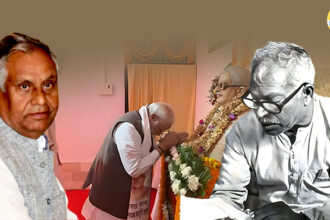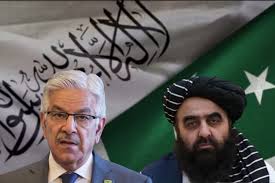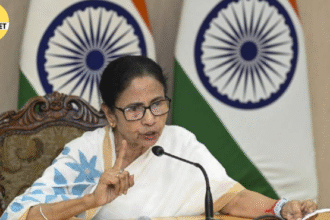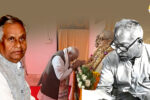Thirty-five years ago, on this very day, India witnessed one of the most defining and divisive moments in its modern history. The Ram Mandir movement had reached its peak. From every corner of the nation, thousands of Ram devotees were marching toward Ayodhya, chanting in unison: “Ram Lalla hum aayenge, Mandir wahi banayenge” (We will come for Ram Lalla, and the temple will be built there).
But the sacred soil of Ayodhya was soon stained with blood. Police opened fire on unarmed karsevaks — not on their own, but on the orders of Uttar Pradesh’s then Chief Minister, Mulayam Singh Yadav. His decision, widely seen as an attempt to consolidate the Muslim vote bank, was preceded a week earlier by another political move in neighboring Bihar — Lalu Prasad Yadav’s arrest of BJP leader L.K. Advani, who was leading the Ram Rath Yatra.
Together, these two events reshaped Indian politics. The Ram Mandir movement became the launchpad for the rise of Hindutva politics, but even more significantly, it redefined vote-bank politics through the creation of what came to be known as the M–Y (Muslim–Yadav) equation — a formula that would dominate the politics of Bihar and Uttar Pradesh for decades.
The politics behind the faith
In the early 1990s, both Mulayam and Lalu were vying for the same political prize — to emerge as the ultimate “Muslim leader” of North India. While Mulayam opted for bullets, Lalu went for symbolism — halting the Rath Yatra and arresting Advani. It was the birth of a cynical political strategy, not a social reality. Historically, the Yadav community had never aligned naturally with the idea of Muslim appeasement. In fact, in the 19th century, during the cow protection movements, gwala (cattle-herding) communities in Bihar were among the most vocal defenders of Hindu causes.
But politics needed a formula — and Lalu’s move gave it one. The “M–Y” equation became a political experiment disguised as social justice. It turned faith into a fault line and polarization into policy.
What really happened in Ayodhya
As Advani was arrested in Bihar, thousands of karsevaks continued their journey — many on foot — toward Ayodhya. Mulayam Singh Yadav, sensing the situation, sealed a 1.5 km radius around the Ram Janmabhoomi. But the devotees were undeterred. Saints like Mahant Nritya Gopal Das, Vinay Katiyar, and Ashok Singhal led groups of peaceful devotees. The elderly among them sang bhajans and even touched the policemen’s feet — a gesture of humility that momentarily disarmed the force.
What followed, however, was brutal. The police began lathi-charging and detaining the karsevaks. A movement rooted in devotion and discipline was turned into chaos — not for law and order, but for politics.
The sacrifice of the Kothari brothers
Amidst this turmoil, two brothers from Kolkata — Ram and Sharad Kothari, both RSS volunteers — managed to enter Ayodhya despite strict curfews. They had organized hundreds of meetings across West Bengal in support of the Ram Janmabhoomi movement and had walked nearly 200 kilometers to reach Ayodhya, evading police checkpoints. Their mission was clear — to hoist the saffron flag atop the disputed structure.
They succeeded. The Kothari brothers unfurled the flag, symbolizing Hindu perseverance. But their triumph was short-lived. On Mulayam Singh Yadav’s orders, the police opened fire. Both brothers were shot dead, along with hundreds of others. Many of their bodies were allegedly thrown into the Sarayu River, concealing the true death toll.
The government justified the massacre as a “law and order measure.” In reality, devotion had been criminalized, and faith was treated as rebellion.
The Birth of a Political Formula
Mulayam’s bullets and Lalu’s arrests were not administrative actions; they were political statements. They announced the arrival of a new power structure built on identity politics — the M–Y equation. Lalu Prasad Yadav later perfected it, turning “social justice” into an electoral slogan. But while he spoke of justice, Bihar slid into corruption and jungle raj.
In this narrative, the Ram Mandir movement was demonized as “religious extremism.” Hindus seeking to reclaim their deity’s birthplace were labeled communal, while politicians masking appeasement as secularism were celebrated as protectors of democracy.
The long arc of justice
That gunfire on 30 October 1990 did not just kill karsevaks; it wounded India’s collective conscience. The blood spilled on the banks of the Sarayu shaped the next three decades of politics.
But history turned. On 5 August 2020, the Bhoomi Pujan of the Ram Mandir was performed — the culmination of a struggle once dismissed as “fanaticism.” What was branded as a political crime became the embodiment of national pride.
Thirty-five years later: Bihar and the politics of equations
As Bihar heads into elections once again, the shadows of that past still loom large. Lalu Prasad’s party clings to the same M–Y formula — caste arithmetic, minority appeasement, and anti-Hindu rhetoric. Ironically, the very movement he tried to suppress continues to define India’s political and spiritual consciousness.
Mulayam Singh’s son, Akhilesh Yadav, now campaigns alongside Lalu’s party, invoking the same legacy of “secularism” that once justified bullets on devotees.
This election, therefore, is not just about power — it’s about memory. It’s a test of whether Bihar will honor the sacrifice of Ram and Sharad Kothari, or continue the politics born from their blood.
Conclusion: 30 October — The day faith was tested
The events of 1990 were not merely about the Ram Mandir; they were about the soul of India. On one side stood those who saw devotion as duty, on the other, those who saw it as a political threat. Thirty-five years later, the question remains — will India remember the karsevaks who died for faith, or the politicians who lived off division?
30 October 1990 is not just a date. It is the story of how power tried to silence faith — and how faith endured.









